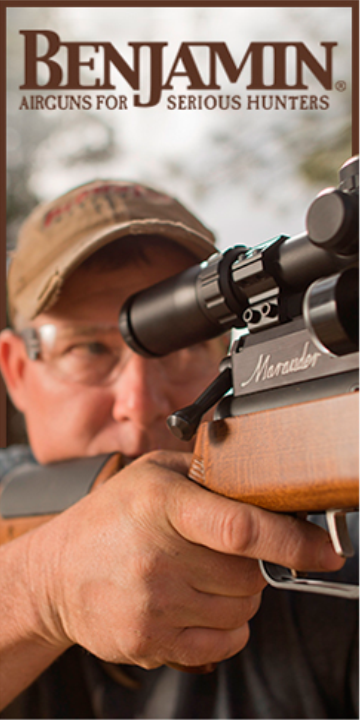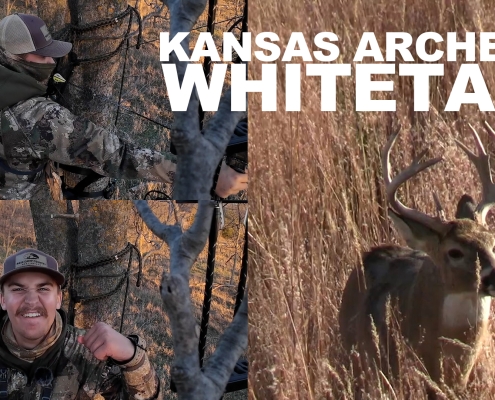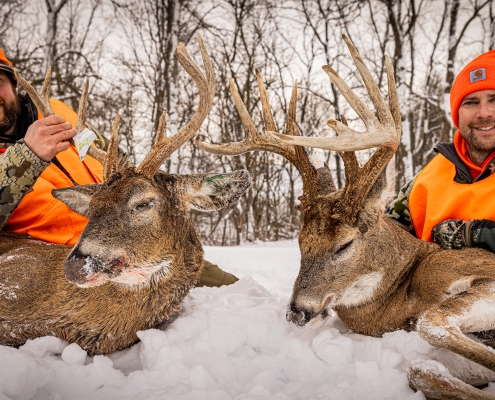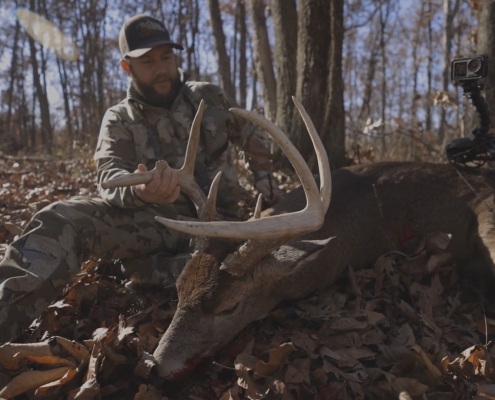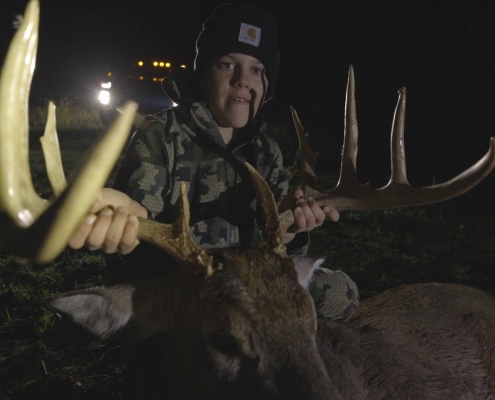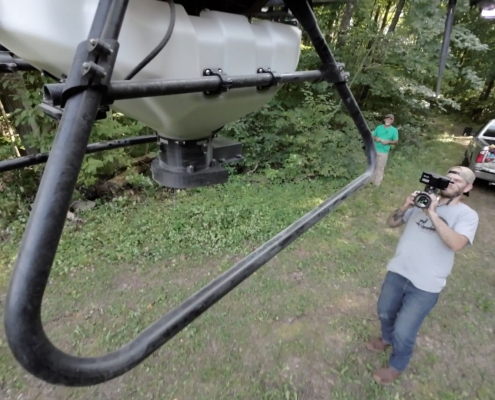Erich Long – Wildlife Trends
They say a picture is worth a thousand words and, if you look at a deer cam photo long enough, you can come up with at least a couple of things to say about it. For example, your typical deer cam photo of a buck can tell you roughly how old it is, a rough score of the animal and what he is doing at the time the picture was taken. Other than that, a photo falls short from helping a deer manager gain as much knowledge as possible.
Trail cameras are excellent management tools, but their use always left me asking, “Why?” Why was the animal there to begin with? Why was the animal looking at the camera in some cases? That leads us to this article, “Are we spooking our deer unintentionally?”
One day I set up my new camera over a water hole. What I didn’t realize at the time, out of stupidity, was I set it up on video mode instead of picture mode. After a few weeks, like most people, I couldn’t wait to see who showed up. I pulled my card from the camera and rushed straight home. As I sat in front of the computer, this strange icon popped up. My computer screen was not filled with the normal icon that goes with trail camera photos. Instead, the screen was full of video clips. I thought to myself, you dummy, what did you do wrong? I clicked on one video clip and to my surprise I absolutely loved what I was seeing. As I watched all the video clips, I quickly became fond of what I was seeing. From that day forward I vowed to never take another picture with a trail camera again. I would always use the video mode instead.
My mistake opened up a new world of trail camera use. Not only could I age the bucks on the hoof much better, I could come up with a more accurate rough score of the animal and observe the deer’s behavior. My favorite aspect of video mode was that I could see what was going on around the animal. Video mode allows deer managers to observe not only the behavior of the animal that triggered the camera, but also the other deer around it. Video mode had taken a valuable research tool, the trail camera, and made it even more useful for myself as a deer manager. It answered most if not all those questions of “why” that I had.
As the weeks and months went by using my new approach at researching, I was starting to notice something that was out of the ordinary. I was getting a lot of footage of deer that were not too fond of the camera. I didn’t think too much of it at the time because in the past I would get random pictures of deer looking at the camera. As my video library continued to grow, more and more deer were looking at the camera at some point during the video clip. When utilizing trail cameras in picture mode, you are only seeing one moment in time. The deer might not be looking at the camera during that moment, but chances are they were looking at it either before or after the photo was taken. In video mode, you can see a substantially longer timeframe; thus the larger number of observations of deer looking at the camera. After using my trail cameras in video mode for a year, I had a large library of clips of deer looking directly at the camera. It led me to begin questioning what kind of an effect this was having on their overall behavior. This could not only affect my research during ratio surveys and looking at age structure, but also have dramatic effects on my hunting. I decided to dedicate the following year to seeing if deer cameras were having a negative effect on deer behavior.
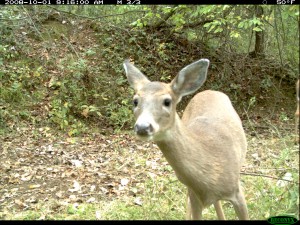 For many, the word “negative” may mean a dramatic experience, but in this case we are using the word as a response that is out of the ordinary. For example, the deer head bobbing, stomping, or bolting off would be classified as “negative”. We wanted to see how many deer would react in this manner versus just going about their daily routine over the course of the video clip. In order to keep our results as consistent as possible, at each camera location we sprayed ourselves down with scent away spray and wore knee high boots. Each camera was set waist high, and sprayed down as well. The cameras were left in a single location for two weeks at a time and all the first week video clips were deleted in order to lessen the effects that scent would have on the results of the study.
For many, the word “negative” may mean a dramatic experience, but in this case we are using the word as a response that is out of the ordinary. For example, the deer head bobbing, stomping, or bolting off would be classified as “negative”. We wanted to see how many deer would react in this manner versus just going about their daily routine over the course of the video clip. In order to keep our results as consistent as possible, at each camera location we sprayed ourselves down with scent away spray and wore knee high boots. Each camera was set waist high, and sprayed down as well. The cameras were left in a single location for two weeks at a time and all the first week video clips were deleted in order to lessen the effects that scent would have on the results of the study.
I started the year with a plan. I was going to set up the cameras in the locations that most deer hunters do; food plots, transition zones, scrapes, bedding areas, and feeders, which are legal in the state of Ohio. What we learned from this was amazing to say the least. We learned that less than half of the deer were having a negative reaction to the camera at some point during the video clip.
Transition zones from bedding areas to feeding areas were studied first. We set up the cameras right on a deer trail to see how they would react. In this location, more than half of the deer would react in a negative fashion. They would walk toward the camera and notice it by sight first, then in some cases walk up to the camera and smell it. After a month of results, we then put the camera off the deer run by several yards in an attempt to keep the camera out of sight. What we found was there was little to no difference in the reaction no matter how close the camera was placed to the deer run. Once again, more than half of the deer responded in a negative way.
Bedding areas were the next on the list of areas to test. The results from this area were much like what we observed in transition zones. Nearly half of the deer would respond in a negative way. From the video clips we had gathered so far, themost noticeable aspect of the negative reactions was the difference between sexes. Does and bucks had a night and day difference no matter where we put the cameras. Does would notice the camera and either investigate it by looking at it or try to get a hint of scent from it. They would also do the typical head bob and/or stomp we’ve all seen while hunting. Does would complete their negative reaction by walking out of the camera’s view. When a buck had a negative reaction to the camera, they would startle just like a doe. After noticing it, they would investigate it and try to smell it. In most cases, they would get a whiff of scent and reacted as if you smacked them in the butt with a 2×4 and bolted from the area.
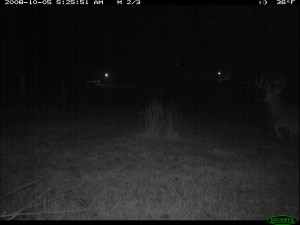
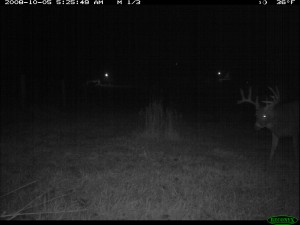
Our next location was scrapes. The observation we gathered here taught us the most during our study. What we saw is that we were dictating deer behavior at scrapes by using trail cameras placed at waist height. Even after taking normal scent precautions on ourselves as well as the cameras, bucks aged 2.5 years and older would visit the scrape and do their normal thing. But once if they noticed the camera they would turn inside out and bolt. This reaction was not surprising but what was interesting was the fact that after this initial negative reaction, they would never return. Not all bucks reacted in this manner. The results were dependent on the personality of the buck. Some don’t mind little boxes on trees and go about their business, while others notice the subtle things and vacate the area. We will say that this happened enough to open our eyes to the way we go about using trail cameras on scrapes. Most of this would have gone un-noticed had it not been for video mode.
The location that brought all the observation together and made the light bulb turn on was food plots. After a thousand or so clips, we had only one doe act in a negative manner to the camera. It was an older doe and the only reason she showed any negative response was that she bumped into the camera. So what does this teach us? Well, what we came up with is that our food plots are where we kept our cameras the longest amount of time. They were accustomed to this thing that flashed or glowed at them or a blob that was part of a tree. This location was unlike a scrape that appears during late October where we instantly placed a camera. Food plots are there nearly year round and always offer a great opportunity for capturing a deer with a trail camera.
The information we gathered over the course of the season and input from other hunters helped us create a theory. I asked around to fellow hunters, “What do you think spooks deer while using cameras”? The majority of the people first 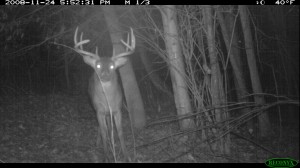 suspected the flash spooked deer, then it was scent, and finally the camera made a noise. So we took these ideas and put them to the test. Our test consisted of setting a camera in an extremely attractive transition zone from a feeding area to a bedding area. We entered the area with a four wheeler and sprayed ourselves after arriving at our setup site. Then we sprayed the cameras. At our first setup, we placed a dummy camera waist high off the deer trail. The camera had no batteries or memory card in it, it was just a shell of a camera. Next we placed a camera ten feet up a tree across from the dummy camera. Due to the height, we had to angle it down in an attempt to capture the deer’s reaction to the dummy camera. Our second set up was the same, but was 80 yards away on another attractive trail. After two weeks, through snow and rain during that time period, we retrieved the cameras. The videos taken during this time period showed that the deer responded no differently to the dummy camera than to the live camera and that the gender reaction stayed the same. We also confirmed everyone’s belief in the lasting effect of scent. At these camera setups, we had does walk over to where we parked the four wheeler two weeks prior and spent some time there sniffing around. Now this is after two weeks of rain and snow. Amazing to say the least! During this test, our cameras captured 800 clips of deer utilizing the deer trails. Only one clip captured a doe looking up at the camera that was placed 10 feet high. She just happened to look up at the camera, then looked back down and went on her way. So, after spinning our wheels on this information, we decided to do another test.
suspected the flash spooked deer, then it was scent, and finally the camera made a noise. So we took these ideas and put them to the test. Our test consisted of setting a camera in an extremely attractive transition zone from a feeding area to a bedding area. We entered the area with a four wheeler and sprayed ourselves after arriving at our setup site. Then we sprayed the cameras. At our first setup, we placed a dummy camera waist high off the deer trail. The camera had no batteries or memory card in it, it was just a shell of a camera. Next we placed a camera ten feet up a tree across from the dummy camera. Due to the height, we had to angle it down in an attempt to capture the deer’s reaction to the dummy camera. Our second set up was the same, but was 80 yards away on another attractive trail. After two weeks, through snow and rain during that time period, we retrieved the cameras. The videos taken during this time period showed that the deer responded no differently to the dummy camera than to the live camera and that the gender reaction stayed the same. We also confirmed everyone’s belief in the lasting effect of scent. At these camera setups, we had does walk over to where we parked the four wheeler two weeks prior and spent some time there sniffing around. Now this is after two weeks of rain and snow. Amazing to say the least! During this test, our cameras captured 800 clips of deer utilizing the deer trails. Only one clip captured a doe looking up at the camera that was placed 10 feet high. She just happened to look up at the camera, then looked back down and went on her way. So, after spinning our wheels on this information, we decided to do another test.
Typically, hunters place their cameras about waist high. This puts the sensor in line with the bulk of the deer’s body which maximizes its ability to capture pictures or videos of all of the deer that pass by. In our first test, I placed the cameras ten feet high just as a starting point for testing. This in an unrealistic height plus a lot to ask of someone due to safety issues. Our second test we set a camera at six feet or eye level to see the reaction of the deer. This setup was going to be at a feeder site on my property in Ohio. We had placed a camera at waist height there three weeks prior and captured eight different bucks utilizing the area. Over the course of two weeks the bucks began to disappear. We then moved the camera to eye level. Now, we didn’t get all eight bucks on video, but most of them were caught on film and out of 600 clips we had one buck look up at the camera and spook. A great lesson was learned during this final test!
The conclusion of all this was not to disclaim or bash any camera make or model. I repeat, this was not done to make you think you shouldn’t ever use a deer cam again! This theory of “are we spooking our deer” should be looked upon as a “positive” observation. Our findings from the food plot sites and the dummy set ups lead us to believe that the deer spook because of visual of the camera on the tree, not the flash. Let’s put it this way, if you walk into an empty house for most of 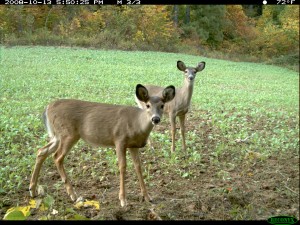 your life and one day you walk into it and you find a box lying in the middle of the room, you’re going to respond to that, would you not? Deer react in the same manner, we believe. The areas we placed our cameras are their home 365 days of the year. They know what should be there and what shouldn’t. At the food plot sites where you may have your camera out longer, they grow accustomed to it and may think nothing from it hence why the lesser amount of negative responses. I had one gentleman after hearing my seminar on this topic go home and change his set up from waist high to eye level. He has always used video mode and uses his cameras year round in the same location. He called me a week or so later and said that my theory was wrong and the height difference made his deer spook. I told him he was correct. What we learned in this study is that it would cause a negative reaction. It’s a visual thing once again. Just like the box in the middle of the room, if you see that box every day in the middle of the room and then one day it’s been moved to the corner of the room, you’re going to notice that.
your life and one day you walk into it and you find a box lying in the middle of the room, you’re going to respond to that, would you not? Deer react in the same manner, we believe. The areas we placed our cameras are their home 365 days of the year. They know what should be there and what shouldn’t. At the food plot sites where you may have your camera out longer, they grow accustomed to it and may think nothing from it hence why the lesser amount of negative responses. I had one gentleman after hearing my seminar on this topic go home and change his set up from waist high to eye level. He has always used video mode and uses his cameras year round in the same location. He called me a week or so later and said that my theory was wrong and the height difference made his deer spook. I told him he was correct. What we learned in this study is that it would cause a negative reaction. It’s a visual thing once again. Just like the box in the middle of the room, if you see that box every day in the middle of the room and then one day it’s been moved to the corner of the room, you’re going to notice that.
Don’t concentrate on the height as much as sight. The height was just a test and you shouldn’t go out and move your cameras higher without testing this theory for yourself. The deer herd you hunt or manage may not care about the placement. Like I said, not all deer had a negative reaction to the cameras but a large enough percentage of them did on my property for me to warrant this attention to it. Anybody can test this theory and you should. Will we continue to put our cameras over scrapes, bedding areas, and transition zone? We will just be smarter about it is all. There is so much to learn about deer and their behavior towards cameras and what better way than with observation from a deer cam!
For more articles on wildlife management topics such as food plot, tree planting, predator control, fertilizing and liming, soil tests, supplemental feeding, fish stocking, weed and grass control in timber and ponds, timber thinning, and many others visit Wildlife Trends. They offer bi-monthly issues from wildlife managers and biologists that help you take the guess work out of your land management.




